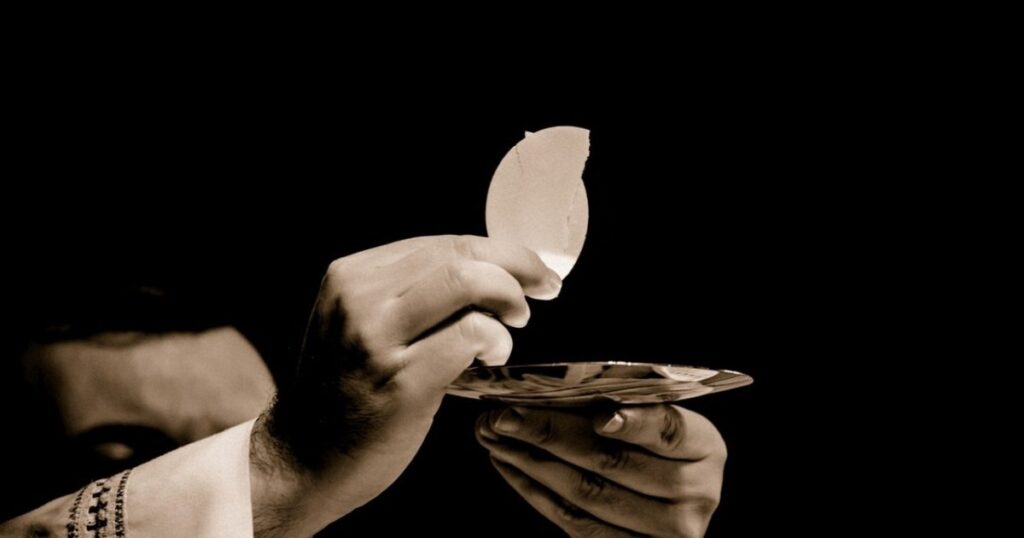The small, peaceful chapel was bathed in the gentle glow of candlelight, illuminating the faces of the faithful who had come to partake in the sacred sacrament. As the priest elevated the golden chalice and the white host, a hush fell over the congregation, for in that moment of pure devotion, they believed that Christ Himself was present before them. However, little did they know that within the very walls of this sanctuary, a theological debate had quietly taken root, one that had spanned centuries and divided believers into two camps: consubstantiation and transubstantiation.
Consubstantiation and transubstantiation are two distinct concepts that seek to explain the mystical transformation that occurs during the Eucharist, when the bread and wine are believed to become the body and blood of Christ. While they both embrace the idea of Christ’s real presence in the sacrament, they diverge in their understanding of how this divine mystery unfolds.
In the debate of consubstantiation, the belief is that the essence of Christ is somehow mysteriously united with the bread and wine, coexisting alongside their physical properties. Imagine, if you will, a seamless blending of two distinct elements, each retaining its essential nature, yet forming an extraordinary union. Through this lens, consubstantiation emphasizes the simultaneous presence of Christ and the sacramental elements, a tapestry of divine and earthly intertwined.
On the other hand, transubstantiation offers a different perspective. Here, it is believed that during the consecration, the bread and wine undergo a profound transformation, not merely symbolically, but substantively. In other words, the very essence of the bread and wine is stripped away, replaced entirely by the body and blood of Christ. Picture a delicate butterfly emerging from a cocoon, shedding its previous form to reveal its true nature in all its magnificence. Transubstantiation places the emphasis on the complete change of substance, while allowing the appearances of the bread and wine to remain unchanged.
Yet, as this debate persists throughout the annals of theological discourse, we must remember that the significance lies not merely in the intellectual pursuit of understanding, but in the profound awe and reverence we owe to this sacred sacrament. For no matter which side of the theological spectrum one finds themselves, both consubstantiation and transubstantiation point towards a truth that surpasses human comprehension.
Within the realm of the Eucharist, we are invited into a profound encounter with the divine, a moment where the eternal breaks through the temporal, and the heavenly meets the earthly. It is a glimpse into the mystery of God’s love for humanity, a love so encompassing that it cannot be contained by mere symbols or concepts. Rather, it requires a transformation so extraordinary, so inconceivable, that it can only be described as miraculous.
So, as we continue to ponder the nuance of consubstantiation and transubstantiation, let us not lose sight of the majesty of this sacrament. Let us approach the altar with hearts filled with deep gratitude, recognizing that in this humble act of partaking, we are offered a taste of the divine, a tangible connection with our Savior.
May this ongoing theological discourse not divide us, but inspire us to delve deeper into the depths of our faith, to seek a fuller understanding of Christ’s presence in the sacrament. For while the intricacies of consubstantiation and transubstantiation may remain elusive, the transformative power of the Eucharist remains unshaken, touching the depths of our souls, and calling us into communion with the Divine.
